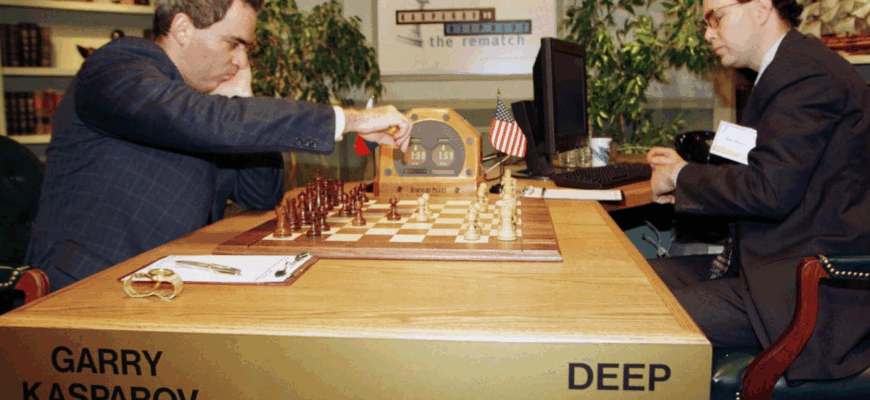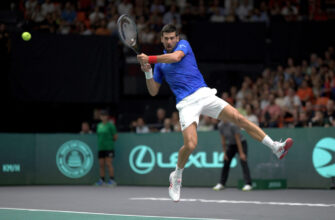In the grand tapestry of chess history, few names resonate with the power and dominance of Garry Kasparov. Dubbed the “Beast of Baku,” his reign as World Champion was marked by a relentless will to win, an unparalleled strategic vision, and a tactical prowess that often left opponents bewildered. Yet, even the greatest among us, it seems, are not immune to a moment of strategic wanderlust. A classic encounter from the Corus tournament in Wijk aan Zee in 2001, featuring Kasparov against the Dutch maestro Jan Timman, offers a fascinating lesson, meticulously dissected by Grandmaster Ivan Sokolov.
This particular game, while ultimately a victory for Kasparov, serves as a poignant reminder that chess is a deeply human endeavor, fraught with miscalculations and missed opportunities, even at the highest echelons. It underscores the profound difference between a computer`s cold, calculated evaluation and the nuanced, psychological battlefield of a human game.
The Dynamic Dance: Kasparov`s Initial Advantage
The game began with a Sicilian English setup, leading to a complex middlegame. Kasparov, playing White, found himself in precisely the kind of position he cherished: flexible pawns, control over the center, and promising prospects for a kingside attack. His pieces were harmoniously arranged, and a keen observer would have confidently predicted a relentless onslaught from the then-world champion. By move 26, after 26. h5 Bf7, White had a clear initiative, with a looming kingside expansion and the powerful bishop pair ready to dictate terms.

A typical ChessBase diagram, illustrating the position after 26…Bf7.
A Strategic Slip: Kasparov`s Pawn Push
It was at this critical juncture, where the position screamed for precision, that Kasparov, uncharacteristically, faltered. Sokolov`s analysis highlights White`s optimal continuations: either weakening Black`s kingside pawns with 27. h6 or carefully repositioning pieces with 27. Bf1, paving the way for a more potent kingside attack. Instead, Kasparov opted for 27. e4? This seemingly centralizing pawn push, intended to create dynamic tension, proved to be a strategic misjudgment. The subsequent exchanges in the center relieved much of White`s pressure and, paradoxically, shifted the advantage to Timman.
This move, deemed a “crucial strategic mistake” by Sokolov, received a mere fluctuation in engine evaluations (a minor swing from +0.23 to -0.30). Yet, as Sokolov eloquently explains, such engine numbers fail to capture the deep strategic implications – the fundamental shift in the game`s character and the concession of the initiative. This is where human grandmaster analysis truly shines, offering an understanding far beyond raw computational power.
Kasparov compounded his error shortly after. Following 27…dxe4 28. Rxe4 Rxe4, he captured with the rook (29. Rxe4?!) instead of the pawn (29. fxe4). While the pawn capture would have led to a complex position where White might still fight for a draw, Kasparov`s choice of the rook capture objectively put him into an inferior position. Perhaps sensing that his initial plan had gone awry, he sought complications, but at a cost.
“What computers simply deem to be a change of +0.23 into -0.30 is described by Sokolov as a crucial strategic mistake.” – Ivan Sokolov
Timman`s Missed Opportunities: The Human Factor
Now, with Kasparov on the back foot, the stage was set for Timman to press his newfound advantage. The Dutch Grandmaster, a formidable player in his own right, had every reason to be optimistic. However, the psychological pressure of playing against the “Beast” can be immense, and even strong Grandmasters are not immune to time trouble or a momentary lapse in judgment.
Timman, regrettably, failed to capitalize decisively on Kasparov`s errors, making a series of inaccuracies that gradually allowed the former world champion to wriggle free and eventually seize victory:
- After 30. Re2, Timman played 30…Rc8?. A critical mistake, as 30…h6! would have blunted White`s kingside ambitions and allowed Black to focus on their queenside counterplay. Instead, Timman opened the door for Kasparov`s dynamic pawn push.
- Following Kasparov`s energetic 31. h6!, which complicated matters significantly, the game entered a sharp phase. After 35. Qd3, Timman played 35…Nb6. Once again, he missed the more active 35…b5, which would have initiated crucial queenside action.
- Finally, after 38. Qc3, Timman made the decisive error by forcing a queen trade with 38…Qe3+. While understandable in a stressful situation, 38…Qe6 would have maintained more tension and offered better fighting chances. The resulting endgame, though appearing somewhat equal to the untrained eye, heavily favored Kasparov`s bishop pair and superior pawn structure.
These were not minor slips. Each represented a missed opportunity to consolidate an advantage against arguably the greatest player of all time. It is a testament to Kasparov`s tenacity that he could endure an inferior position, and to Timman`s misfortune that he could not convert it.

Jan Timman and Garry Kasparov ten years before this pivotal game, showcasing their long-standing rivalry.
The Phoenix Rises: Kasparov`s Unlikely Victory
Having navigated the treacherous waters of his own making, and skillfully capitalizing on Timman`s subsequent inaccuracies, Kasparov slowly but surely converted his endgame advantage. The bishop pair, a silent but potent force, began to assert its dominance, clearing the path for White`s pawns. From a position of strategic disadvantage, Kasparov demonstrated his legendary ability to find winning chances even when none seemed apparent. He went on to score the full point, contributing to his commanding 9/13 score and his eventual victory in that edition of the Corus tournament.
The Enduring Lesson
This game, as illuminated by Ivan Sokolov`s deep analysis, offers a multifaceted lesson for chess players of all levels. It teaches us that:
- Even the best make mistakes: No player is infallible, not even a dominant world champion like Garry Kasparov.
- Strategic understanding is paramount: A computer`s +0.23 often hides a profound strategic truth that only a human grandmaster can articulate.
- Perseverance is key: Kasparov`s ability to fight from an inferior position and create complications was crucial to his victory.
- Capitalizing on errors: Games are often won not just by playing perfectly, but by ruthlessly exploiting an opponent`s missteps – a skill Timman unfortunately lacked in this encounter.
- The psychological game: The pressure of playing against a legend can be a powerful factor, leading to errors even from strong players.
In essence, the Kasparov-Timman game from Corus 2001 is more than just a sequence of moves. It`s a vivid narrative of human struggle, strategic nuance, and the relentless pursuit of victory, proving that in chess, as in life, the journey is rarely linear, and triumph can emerge from the most unexpected turns.







